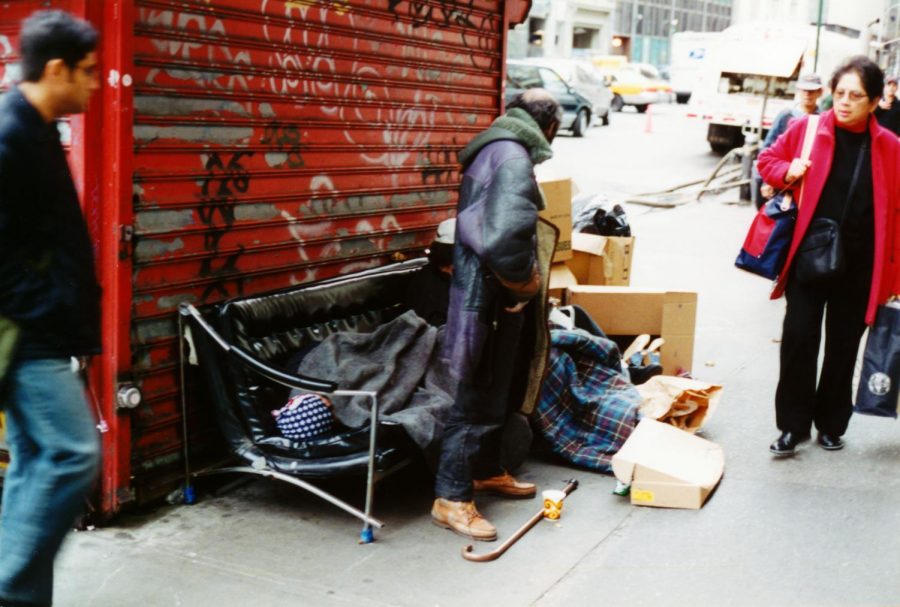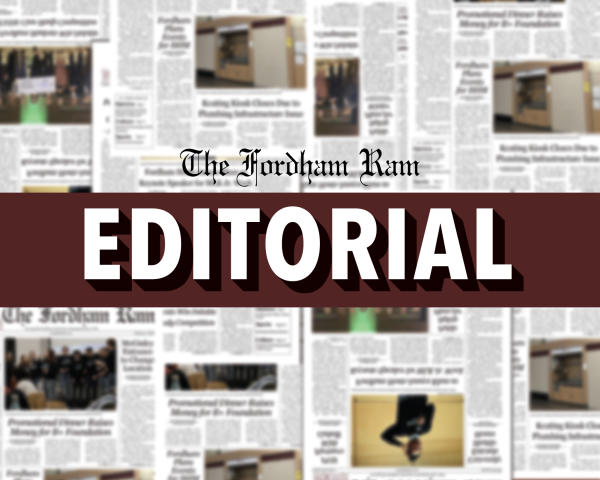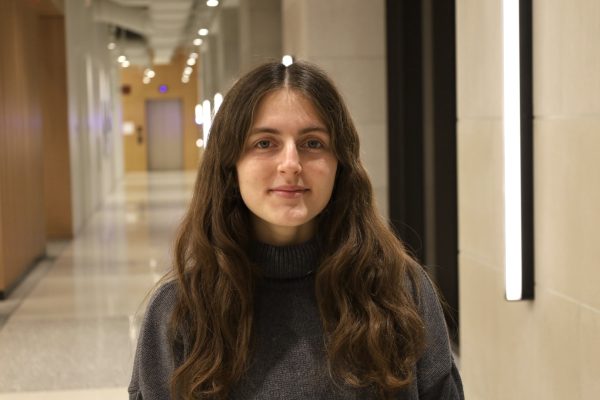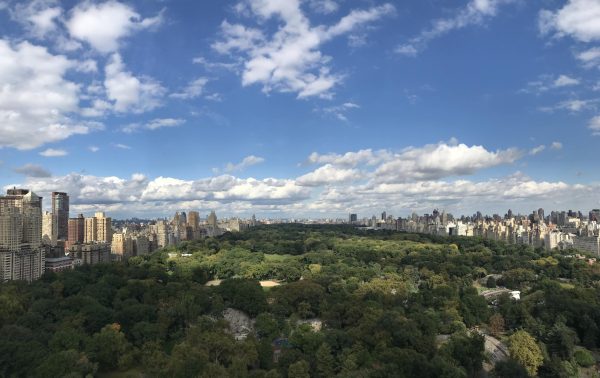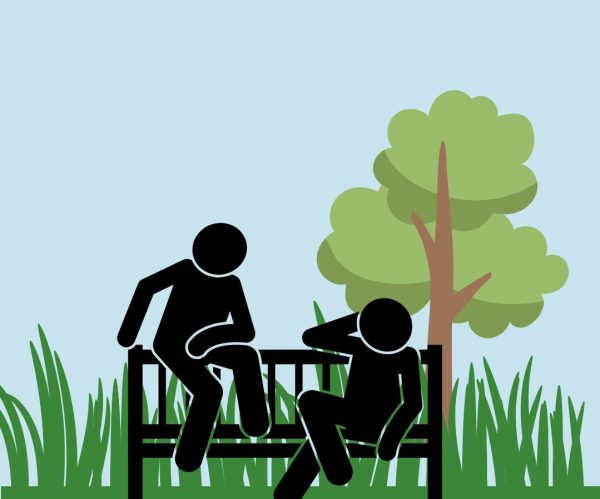New York’s War on the Homeless
Amid one of the longest periods of economic expansion in New York City’s history, rates of homelessness in the city have reached crisis levels. The latest development in this trend came in the form of a report released in August which found that the homeless population in New York’s subways has increased over 20% from last year. In response, the Metropolitan Transit Authority (MTA) announced it is expanding its police force by 50% and will begin pushing out homeless New Yorkers who currently live in the subways.
This expansion will consist of hiring 500 new police officers and 81 new supervisors. The hiring spree will cost over $50 million in the next year, and in the next four years the MTA, which is already on a tight budget, will spend over $220 million on these officers alone.
Additionally, the NYPD is assembling a system of 100 security cameras positioned in subway stations across the city in an effort to track homeless subway residents and discourage their continued inhabitation of the subway. The announcement of the surveillance program followed Governor Andrew Cuomo’s criticism that New York was not doing enough to combat homelessness on the subway.
For the same New Yorkers who are reluctant to pay taxes to finance modern lights and basic infrastructure, forcing out the homeless appears to be a worthy cause.
This effort to combat homelessness by persecuting the homeless is not new, and has been practiced for decades by both the MTA and New York City government in the form of “hostile architecture” — the construction of public spaces and amenities to control public behavior and maintain “order” in public spaces. These efforts are often in the form of limiting seating in public spaces, placing dividers on benches to prevent pedestrians from lying down and adding spikes to objects like fire hydrants.
Hostile architecture recently came into the public view with the MTA’s “Enhanced Solution Initiative” in 2017, which cost $74 million and included the introduction of “leaning bars” throughout the city in place of benches. Supporters of such structures, which also come in more brutal forms including spikes placed around fire hydrants in Manhattan, claim that they prevent public order problems like vandalism. Yet opponents often point out that the real intention of hostile architecture is to keep homeless residents out of sight and out of mind.
By eliminating seating in pubic spaces, hostile architecture forces people to pay to sit down at private establishments like restaurants, in effect creating a paywall for enjoying public spaces. This means that homeless residents can no longer frequent areas like parks, which are now reserved for the privileged.
The increase in hostile architecture throughout New York City comes at a time when the city’s homeless population is soaring, forcing homeless New Yorkers to congregate in the few remaining areas of the city where they can rest — one of the largest of which is the subway.
A seemingly straightforward solution to this problem, of course, would be to build more homeless shelters so New Yorkers are no longer forced to live on the streets. Opposition to the expansion of the city’s homeless shelters blocks this from happening, however.
In 2017, Mayor Bill de Blasio proposed the construction of 90 new shelters and the expansion of 30 existing ones to treat the epidemic of homelessness in New York City. The plan, called “Turning the Tide on Homelessness,” was met with widespread backlash, as local officials were given a choice to house homeless New Yorkers in their own neighborhoods or give in to rising anti-homeless sentiment among New York communities. This backlash was ripe for exploitation, and many local politicians, including Sam Esposito, president of the Ozone Park Residents Block Association, have exploited this bigotry for their own ends.
On July 5, 2019, residents of the Queens neighborhood of Ozone Park awoke to find three cars had been vandalized. This vandalism occurred near a shelter, which Esposito’s organization had previously opposed. Residents of the neighborhood immediately blamed the vandalism on the residents of this shelter, despite the lack of evidence.
The Ozone Park Residents Block Association was frustrated when they were denied access to surveillance footage from the shelter — something they had no probable cause to obtain — so the group installed its own surveillance system.
The system has been installed and consists of eight cameras which are constantly pointed at the homeless shelter, monitoring the daily lives of the New Yorkers who live there. New York City’s Department of Homeless Services (DHS) stressed that there is no evidence to back the claims of the block association, and accused Esposito’s group of sowing bigotry against the neighborhood’s homeless population.
Opponents of homeless shelters claim that their opening the structures increases local crime rates. Despite these claims, the 102nd police precinct, which includes Ozone Park, saw a 40% drop in non-felony crimes in the year after a new shelter was constructed there. Cases of public order offenses also dropped by about the same amount.
Esposito dismissed this discrepancy by claiming that people don’t trust the police, and insisted that he had witnessed loitering. It should be noted that all DHS shelters required that their residents leave the shelter during the day until de Blasio’s effort, and during the day many homeless New Yorkers have nowhere to go.
Popular backlash often focuses on shelters dedicated to housing women and children, a group which makes up 70% of homeless New Yorkers, including one which was proposed in Staten Island. Currently, Staten Island has only one shelter which houses 46 families or a total of 149 homeless New Yorkers. According to the DHS, the borough has a homeless population of around 1,200. Meanwhile, skyrocketing rents prevent homeless people from moving off the streets.
One in four of all luxury apartments built in New York City since 2013 are still unsold. On the Lower East Side, 68% of all new units built since 2013 are still unsold. Meanwhile, many of those luxury apartments which have been sold remain unoccupied and are being treated as investments. In a city unable to house its poorest citizens, real estate has become a form of investment rather than shelter.
Homeless New Yorkers have been evicted from public spaces and denied housing in the form of shelters. Meanwhile, more low-income New Yorkers are being forced onto the streets by high rents.
The obvious result of this is that the burgeoning homeless population has been forced to find shelter from the elements in New York’s extensive subway system.
Meanwhile, New Yorkers seem intent on forcing their homeless neighbors out of sight rather than addressing the larger issues behind the problem of homelessness in America.
Now that homeless New Yorkers are being pushed from their only remaining spaces, where should we expect them to go?
Collin Bonnell, FCRH ’20, is a history and theology major from Hingham, Massachusetts.

